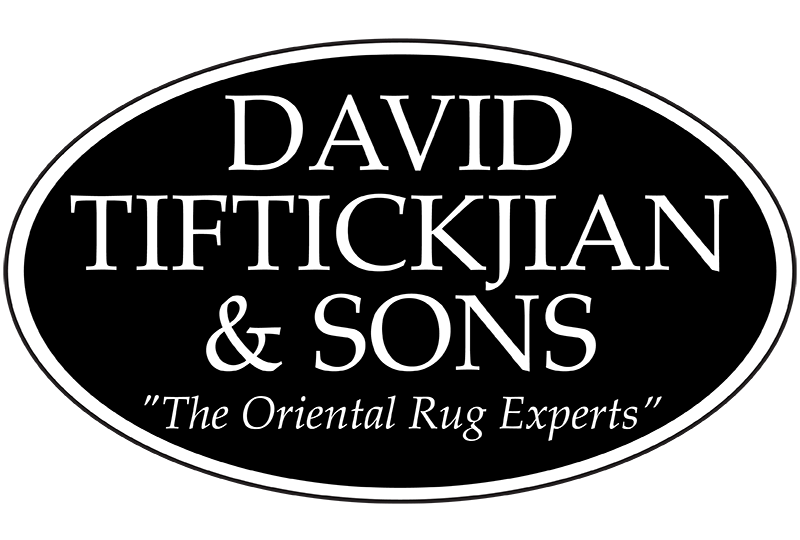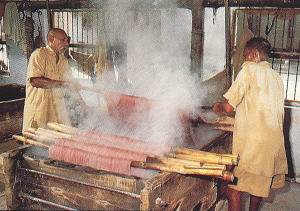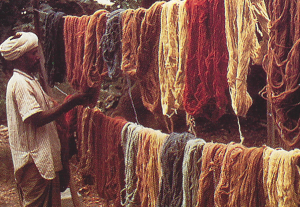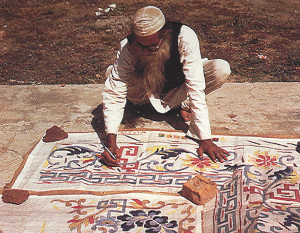How an Oriental Rug is Made
Todays weavers of Oriental Rugs still weave with the same patience and skill as their ancestors. The only tools used are ten fingers and a sharp knife, a comb to tighten the knots, and a pair of shears to clip the pile. These simple tools are responsible for creating the unique beauty and character found in Oriental Rugs. A weaver can only start his job after a design has been created. He must know the color of wool used for each knot. The design and color is plotted out on paper and used as the weaver’s guide. Next, a frame is constructed called a loom. A column of thread called a warp is stretched from the top to the bottom of the loom.
Once the warps are arranged, the weaver uses a length of wool to tie the knots that eventually create an Oriental Rug. An Oriental Rug can be judged by the number of knots per square inch. The higher the number of knots per square inch, the finer the Oriental Rug. A rug weaver uses one of two kinds of knots, Persian or Turkish. The persian knot is used in Persia, India, Pakistan and China. The turkish knot is used primarily in Turkey and Caucusus. Eventhough both knots are tied differently, both produce fine Oriental Rugs. It is important to select quality and not just the country of origin.
Know Your Knots
What is a knot?
A knot is the term used for a strand of wool yarn which is looped around two adjacent warp threads and then cut to form the pile (surface of the carpet). Learn more about the different knots and the advantages for each.
Specific Types and Designs
David Tiftickjian & Sons feel that quality is the most important factor in Oriental Rugs. High quality Oriental rugs are hand-knotted in Persia, India, China, Pakistan, Turkey and Afghanistan. These countries produce similar patterns in a wide range of qualities. Some of the basic patterns and names are Sarouk, Kirman, Chinese Pekin, Aubusson, Heriz and Bokhara. Any Oriental Rug you select, David Tiftickjian & Sons guarantees it will meet our high standards of quality.When you visit one of our stores we will be glad to show you the differences. Remember, David Tiftickjian and his three sons believe in selling better quality rugs for the same price that other dealers demand for lesser goods.



